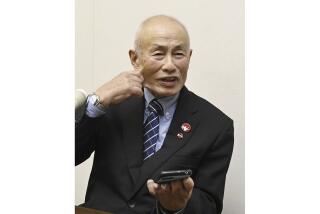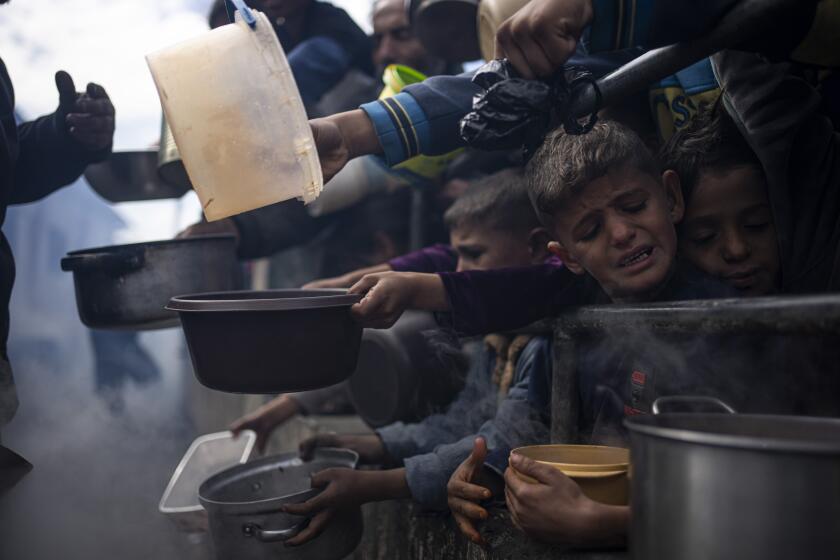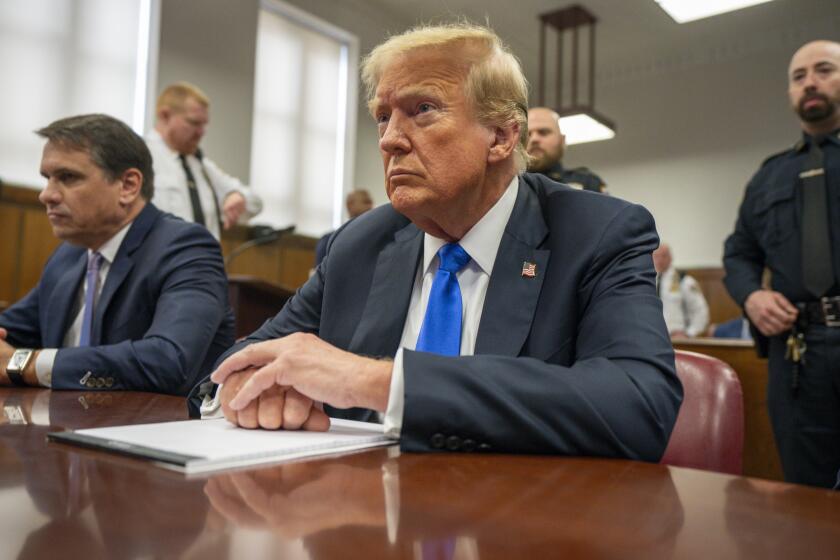From the archives:: Tom Hayden on America’s legacy in Vietnam
Editor’s note: Activist and politician Tom Hayden has died in Santa Monica at the age of 76. This opinion piece he penned was originally published in the Los Angeles Times on Jan. 20, 2013.
Out beyond the swank poolside bar at Hanoi’s Metropole hotel, which I visited last month, a gated entrance opens onto a dark set of stairs. At the bottom is a dank and musty bomb shelter, and, for those who can read Vietnamese, a sign in golden lettering explaining that Joan Baez and Jane Fonda once took refuge there.
I did too, though not at the same time they did.
I was a 25-year-old antiwar activist when I traveled to Hanoi in December 1965. I was working as a community organizer in Newark, N.J., and it angered me that President Johnson was drafting thousands of young Americans for a ground war he had promised not to launch when he campaigned in 1964. I felt certain the war in Vietnam would be the end of the war on poverty.
The U.S. government didn’t allow Americans to visit Hanoi at that point, but a group of us thought it was important to meet the “faceless Vietcong” and to investigate Johnson’s claim that his bombing targets were only “steel and concrete,” not civilians.
We visited bombed villages and pagodas that put a lie to the president’s words, and we helped open the way for war correspondents like Harrison Salisbury of the New York Times, who later confirmed evidence of widespread civilian casualties in North Vietnam.
I had never been outside the United States before that trip, and what I found was a place far different from the propaganda I’d heard. Yes, the North Vietnamese were led by a communist party, but the party had arisen in the larger context of a colonial independence movement.
Far from being faceless fanatics, the Vietnamese I met struck me as patriotic descendants of centuries of war against the French, British, Chinese and now, my countrymen.
Operation Rolling Thunder, the American bombing campaign over the North, had not reached Hanoi at the time of our visit, but air-raid sirens were continuous at night, and whenever the alarms sounded, the gracious hotel staff roused us from sleep and led us downstairs to the shelter. The place was claustrophobic, but candles, flashlights, dark humor, BBC radio news and the calm of our hosts made the anxiety pass.
After the war ended in 1975, the shelter was buried for years while the hotel was rebuilt. It was unearthed during construction of the poolside bar in 2011. But I worry that much of the war’s history remains buried.
Jan. 27 will be the 40th anniversary of the Paris peace agreement, which formally ended direct U.S. military involvement in Vietnam, and there is likely to be considerable news media coverage of the occasion.
By contrast, there was virtually no coverage last month of another 40th anniversary in the war’s history, the “Christmas bombing” of Hanoi in December 1972. When remembered at all, those punishing B-52 attacks are thought to have bombed Hanoi to the peace table.
But that’s simply not true.
In November 1972, Richard Nixon had won a sweeping reelection victory over peace candidate George McGovern. Nixon was helped to victory by Secretary of State Henry Kissinger’s optimistic October announcement that “peace is at hand” in Vietnam.
A month after the election, however, the president wasn’t thinking about peace. Instead, he was preparing an attack that he insisted be “massive and brutal in character.”
In his book “The 11 Days of Christmas,” Marshall Michel III, a military historian who flew 321 combat missions over Vietnam, writes that the administration assumed “the North Vietnamese would crack quickly.” The B-52 planes that would carry out the attack were seen as practically invincible: Not one, according to Michel, had been shot down during 112,000 missions in Vietnam over seven years.
That Christmas, as the lumbering giants took off from bases in Guam and Thailand, their confident crews listened to Henry Mancini’s “Baby Elephant Walk” on headphones. But it was quickly clear that the campaign wouldn’t be easy.
On the first two nights of the attack, Vietnamese forces shot down eight B-52s, sending “shock waves of alarm” through the administration, according to Michel’s history. Over 11 days, 15 B-52s were downed over Hanoi, and five others were badly damaged. Twenty-eight Americans were killed and 34 were captured on the ground. The crushed remains of the B-52s were piled in Hanoi’s center for the people and journalists to see.
The U.S. nevertheless dropped 15,000 tons of bombs on Hanoi during the campaign. On Kham Thien Street, in a civilian neighborhood, 250 people were killed. The Bach Mai hospital was flattened, leaving 25 medical staff dead and many patients buried alive.
No one knows the count exactly, but common estimates put the number of Vietnamese killed at 1,600 in Hanoi and 300 in Haiphong.
Joan Baez was staying in the hotel at the time, and spent many hours in its bomb shelter. With her were Vietnam veteran Barry Romo, Yale theologian Michael Allen and retired U.S. Gen. Telford Taylor, who had been an American prosecutor during the Nuremberg trials of Nazi war criminals.
Taylor sent out a report from Hanoi that stirred peace activists, including Vietnam vets and clerics. Thousands of Americans immediately rallied to send medical aid to help rebuild Bach Mai hospital.
The B-52 bombings ended on Dec. 29 without in any way achieving their goal of bringing North Vietnam to its knees.
The Paris peace agreement was signed one month later, looking almost exactly like an agreement both sides had been prepared to agree to months earlier. The treaty ended U.S. military involvement, but the battle between north and south continued for two more bloody years before the hapless Saigon regime fell to a North Vietnamese military offensive.
By that time, Nixon was no longer in office, having been forced to resign in the wake of the Watergate scandal.
Perhaps the bomb shelter will serve to remind people of the great wrong we imposed on a country halfway around the world.
Even today, Vietnamese children are born with birth defects caused by the defoliant Agent Orange, which was sprayed widely by U.S. troops. Even today, farmers lose limbs from stepping on land mines and cluster bombs left by Americans on former battlegrounds.
The work of reconciliation is only beginning.
Tom Hayden is a former California state senator. His earlier writings on Vietnam have been collected in “Writings for a Democratic Society: The Tom Hayden Reader.”
More to Read
A cure for the common opinion
Get thought-provoking perspectives with our weekly newsletter.
You may occasionally receive promotional content from the Los Angeles Times.










